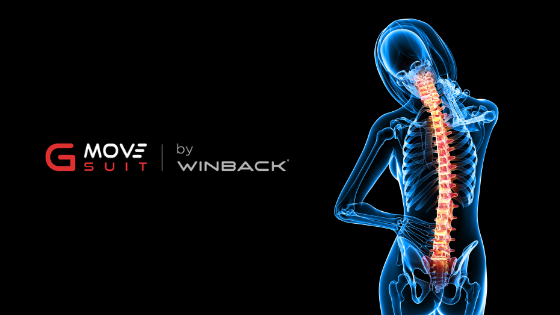Exoskeletons are a way to regain walking and verticality for patients with psychomotor disorders. The goal is to help the patient with musculoskeletal disorders and/or decreased physical abilities. Many of them are oriented towards robotic algorithms, mechatronics and biomechanics. The active compression GMOVE-SUIT proposes a new alternative support and aid to proprioception: the “pneumatic exoskeleton”.
GMOVE-SUIT active compression
GMOVE-SUIT is a system of pressure and decompression of the lower limbs thanks to air chambers inflated xxx in rythm. The applications of use are varied, from sport to wellness, rehabilitation and neurological orthopedics.
This system is inspired by pressure therapy and its related the benefits. Active pressotherapy consists of rhythmic compression movements during physical effort. Venous return will be stimulated by supporting the venous wall and activating muscle pumping. The activity of the muscle cells is increased and the proprioceptive information increases under the effect of compression of the receptors.
Following the feedback from patients, prescribers and scientists that we have had over the past year, the results show effects similar to those of an exoskeleton. They are justified in the second part of the article.
GMOVE-SUIT, “the pneumatic exoskeleton”.
As previously mentioned, the aim here is to allow patients with psychomotor disorders to regain verticality, to obtain a better postural scheme, to improve their dynamic balance and to help proprioception. Its use during rehabilitation is an additional asset.
When we look at neurological pathologies (multiple sclerosis, Parkinson’s disease, Alzheimer’s disease…), myopathies (Duchenne muscular dystrophy) and Ehlers-Danlos syndrome, we find a significant loss of “proprioception”.
Proprioception refers to the perception of the position of different parts of the body in space. It includes a set of receptors, pathways and nerve centers involved in perception, whether conscious or unconscious. These feelings of perception are improved when slight pressure is applied to the lower limbs.
Proprioceptive messages are transmitted by “mechanoreceptors” located throughout our body. They transmit information about the position of the body to the brain. Using this information, it sends instructions instinctively to the muscles to maintain the body’s balance and posture. Whether it’s malformations, neurological problems, injuries, or age, all of these causes can lead to problems with proprioception and balance.
Following the use of GMOVE-SUIT on several patients suffering from these pathologies, we have observed beneficial effects related to the recovery of “body recognition”, proprioception:
- Postural adjustments
- Control of muscle contraction
- Recognition of joint positions and movements
- Muscle sensations
- Improvement of the walking pattern
- Maintaining balance
Testimony of Mrs. C.
She had a stroke 7 months ago and is now hemiplegic on the right side. Walking with a cane is done with a reaping of the right lower limb.
“The GMOVE-SUIT restores my confidence in my leg, I can control it in a better way. It feels lighter, it requires less effort to walk. I take fewer breaks during my rehabilitation session. »
When the patient uses the GMOVE-SUIT, we observe a better control of the knee. She is then able to walk unaided, and the passage of obstacles is faster. In addition, the patient needs fewer breaks between each exercise, which optimizes the time of the session.
To remember :
Mechanoreceptors are the sensors that transmit information to the brain to be maintained, coordinated and having a good posture. People with neurological disorders use proprioceptive physiotherapy to stimulate these sensors. The GMOVE-SUIT can be used as a pneumatic exoskeleton to support the patient during his rehabilitation and in his daily life.

